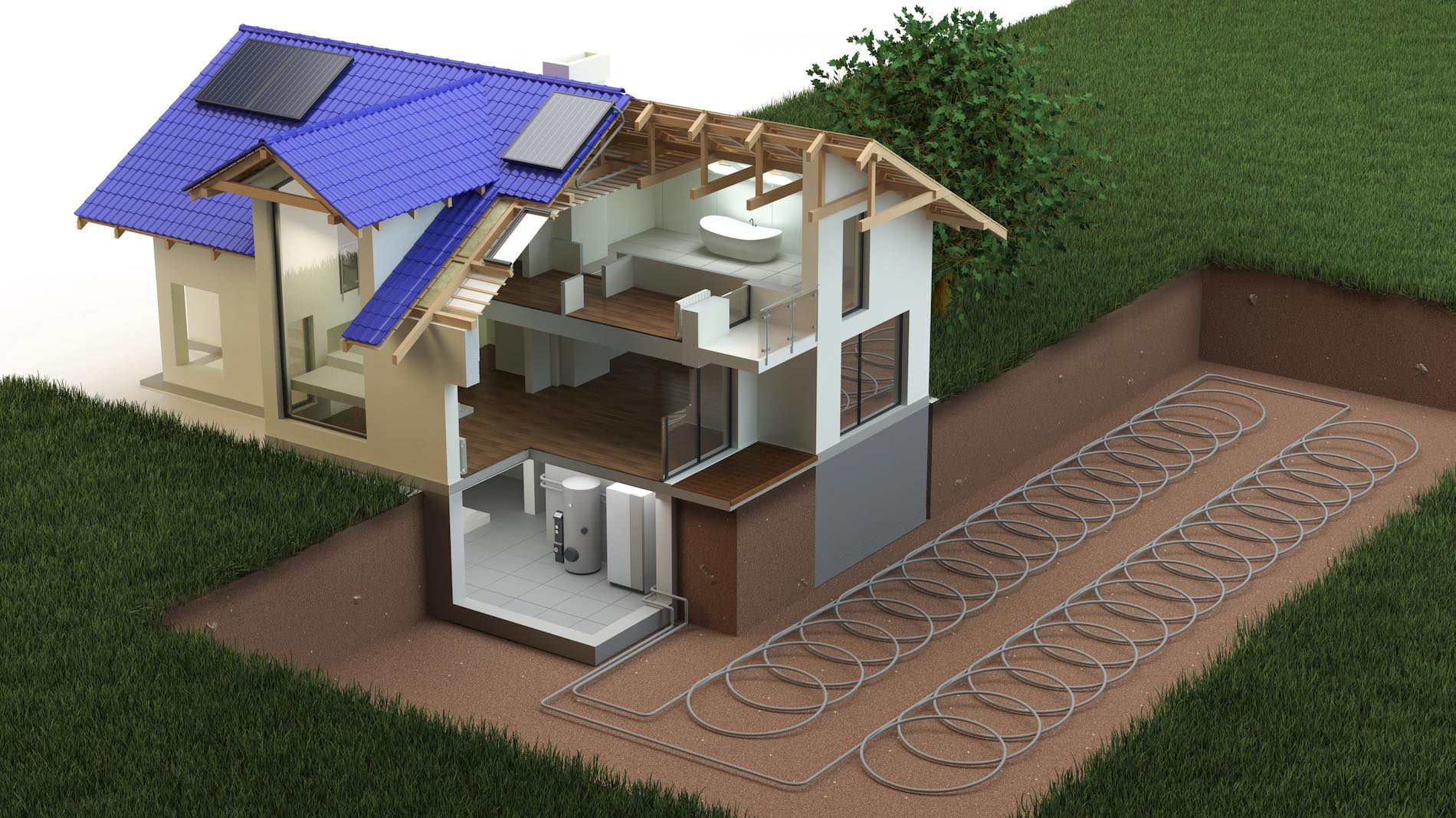Sustainable Energy Sources
Solar Photo Voltaic
Solar Thermal
Solar thermal panels are designed to generate heat for use in domestic hot water cylinders. We offer both panels and evacuated tubes.
Solar Photo Voltaic Thermal (PVT)
This technology is a combination of solar voltaic and solar thermal and come in one unit. They are also described as hybrid solar.

Air Source Heat Pumps
Cara EPS have a number or product and install options for Air source heat pumps (ASHP). ASHP need electricity to run, but because they are extracting renewable heat from the environment, the heat output is greater than the electricity input. This makes them an energy efficient method of heating homes.
There are two main types of ASHP: air-to-water and air-to-air. Choosing an air-to-water or an air-to-air system will determine the type of heat distribution system you need.
We can supply and install either system though air to water are the most common ASHP in the UK
Unlike gas and oil boilers, heat pumps deliver heat at lower temperatures over much longer periods. If you are installing an ASHP to replace a gas or oil boiler, you should consider whether you can also upgrade your insulation to get the most out of your ASHP. You might also consider fitting larger radiators or underfloor heating. – Energy Saving Trust

Ground Source Heat Pumps
Ground source heat pumps (GSHPs) use pipes that are buried in the garden to extract heat from the ground. This heat can then be used to heat radiators, underfloor or warm air heating systems and hot water in your home.
A ground source heat pump circulates a mixture of water and antifreeze around a loop of pipe, called a ground loop, which is buried in your garden.
Heat from the ground is absorbed into the fluid and then passes through a heat exchanger into the heat pump.
The ground stays at a fairly constant temperature under the surface, so the heat pump can be used throughout the year.
Ground source heat pumps can perform better with underfloor heating systems or warm air heating than with radiator-based systems because of the lower water temperatures required, so as with ASHP’s considerations should be given to other measures before choosing if it’s the best system for you or what you might want to do prior to installation. – Energy Saving Trust
Cara EPS can assist you with this process and planning as well as provide quality install and GSHP for your home.
Voltage Optimisation
Domestic voltage optimisation works by regulating the mains voltage to 220V. National electricity grids are required to supply electricity between set levels. Typically, the incoming voltage to your property will vary between 216v and 253v (as agreed with the current European Legislation).
The most efficient supply voltage for your typical household appliances is 220V. Your home, therefore, may be provided with voltage at a higher level than is needed. Optimising the voltage delivered to appliances means that significant cuts in power consumption can be achieved; appliances will consume less energy.
It therefore makes sense that this too, like solar PV, will reduce energy costs and carbon emissions. The life span of your equipment will also be extended.
A domestic voltage optimisation unit provided by Cara EPS is connected between your meter and your distribution board. The unit intelligently optimises the voltage supply to all your electrical appliances in your property. Energy savings for a typical house could be between 5% and 13%.
Battery Storage
Domestic battery storage is a rapidly evolving technology that is typically used alongside solar PV. It allows surplus electricity generated by solar panels to be stored for later use rather than exported to the National Grid.
If you have solar PV you can generate plenty of electricity when the sun is shining. But on overcast days you’ll make less, and you’ll make none at all at night. This generation pattern often doesn’t match up with when households want to use electricity – it’s at night when you want the lights on and to use appliances like a dishwasher or TV.
If your solar panels generate electricity and you don’t use it, it ends up being fed into the National Grid. You may get paid for it, but not as much as you save if you use the power yourself.
This is where battery storage comes in. If you can store the electricity generated during the day, there is less need to consume electricity – e.g., run your washing machine – when the sun is shining and you’ll use more of the power you generate and save money. – Centre for Sustainable Energy
Cara EPS alongside our Solar PV partners can assess the best needs for your solar to and the requirement for battery storage.
EV Electric Vehicle Charging
You can charge an electric car at home using a dedicated home charger (a standard 3 pin plug with an Electric Vehicle Supply Equipment (EVSE) cable should only be used as a last resort).
Electric car drivers choose a home charging point to benefit from faster charging speeds and built-in safety features. Charging an electric car is like charging a mobile phone – plug in overnight and top up during the day.
Certain electricity tariffs offer much cheaper electricity at specific periods (usually late at night) and scheduling to charge your car at these times can save you money.
There are various government incentives and grants available to install electric charging points in your home to encourage the uptake of electric cars in the UK.
The installation process involves wall mounting the charge point on an exterior wall or garage, near to where you park and connecting it safely to the mains electricity supply.
An installation should take around three hours to complete, depending on the individual requirements of the driver and the complexity of the installation.
Please contact Cara EPS if you would like to know more about EV charging at your home.